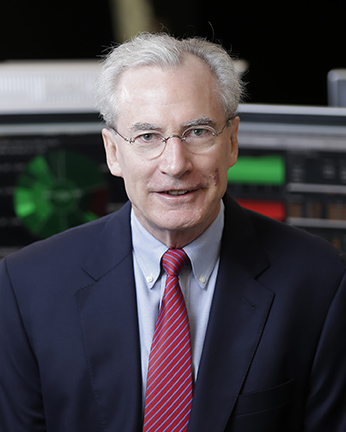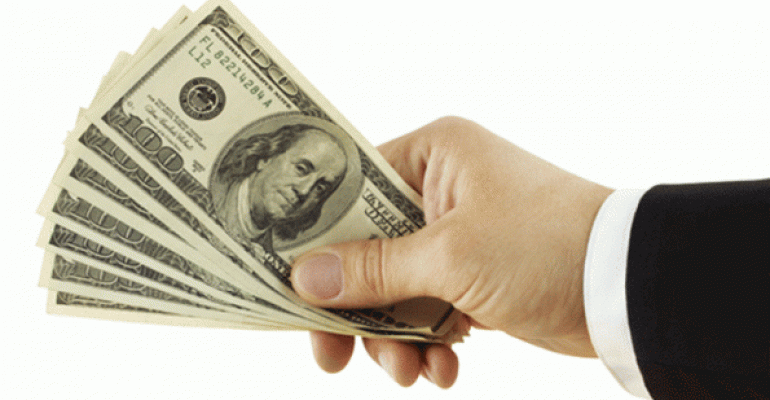
Labor cost pressures, long an issue facing the restaurant industry, have been in the news even more since talk of raising the hourly minimum wage to $15 first surfaced.
A $15 hourly minimum wage will become a reality in New York, California and some municipalities over the next several years. Furthermore, the Democratic Party platform demands raising the minimum wage to $15 nationwide, suggesting that the call for an increase will only get more vocal. Adding to wage pressures will be the new overtime regulations recently adopted by the Labor Department. These developments may have contributed to the decline in public restaurant company valuations over the last year.
Some analysts have attempted to quantify the impact of these higher costs on the typical company’s income statement to ultimately determine the menu price increase necessary to offset the cost increase. My back of the envelope calculation is that menu prices at a casual-dining restaurant would have to go up close to 10 percent to cover the increase in minimum wage to $15 an hour and the increase in the overtime threshold, assuming no impact on traffic and no change to staffing.
I have seen other estimates that calculate the increase at a quick-service restaurant would need to be in the order of 15 percent to restore the dollar profitability, and in excess of 50 percent to maintain the margin.
This is a useful exercise, even if unrealistic because of the likely changes in behavior by customers and management. Focusing on the income statement, however, omits a more damaging aspect of the increase in costs: the impact on the return on capital invested in a restaurant.
The return on capital at the restaurant level is, in my opinion, the ultimate determinant of the value of a restaurant company. It provides the economic rationale for taking the risk of building a new restaurant and growing the brand: the higher the return, the greater the incentive to grow. Investors will assign a higher multiple to the earnings and cash flow of a faster-growing company.
Critical factors of the current labor cost pressure
Labor cost increases on the order of magnitude outlined above will be very difficult to offset in the current economic, consumer and competitive environments. The argument that the industry has weathered labor cost pressures before, and will be able to do so again, is Pollyannaish, and ignores several critical factors.
First, labor costs are higher today than they were some 20 years ago, with the impact of the increase on profitability mitigated by lower food costs. For example, as a percentage of sales, labor costs at Outback Steakhouse were 23 percent to 24 percent in 1993, and between 27 percent to 28 percent in 2015. (True comparability is difficult to assess because of the managing partner program in place in the 1990s.) Food costs declined from approximately 39 percent, to 32 percent to 33 percent in the same years. Brinker International Inc., The Cheesecake Factory Inc. and others experienced a similar trend.
Second, a $15 minimum wage would more than double the rate since the last increase in mid 2009. Depending on the exact timing of the legislated increase, the minimum wage rate would double over approximately 10 years. In contrast, it took 19 years to double prior to 2009.
Third, there are many other regulated labor increases besides the minimum wage, such as overtime rules, health care, mandatory leave requirements and so on.
Consequently, the industry is likely to face a more rapid doubling of the minimum wage from a higher labor base as a percentage of sales at the same time there are other labor cost pressures coming from many directions.
Over the last 20 years or so, a relatively benign food cost environment has enabled the industry to offset some of the margin pressure from labor increases. Although food costs are inherently volatile and difficult to predict, that stability is not something investors should count on going forward.
The industry clearly will not stand still and do nothing, save raise menu prices. Likely responses will include continuing to use technology as a way to both increase labor productivity and reduce labor hours, and implementing more targeted, personalized marketing to increase brand loyalty and frequency, thereby growing sales.
These actions are likely to lessen the menu price hikes required, but not eliminate them. To the extent menu prices go up, there will undoubtedly be a negative impact on traffic, putting additional pressure on sales, profitability and returns.
With this as a likely scenario, owners and investors will have to either reduce the return on investment hurdle for a new restaurant or slow unit expansion, or most likely both. In this context, investors in both public and private restaurant companies need to focus even more on returns on capital and be more discriminating when evaluating potential investments.
Operators must be even more disciplined in both site selection and managing investment costs to maintain adequate returns on capital in anticipation of a new cost structure that results in margins several points lower than those that are currently being achieved.





